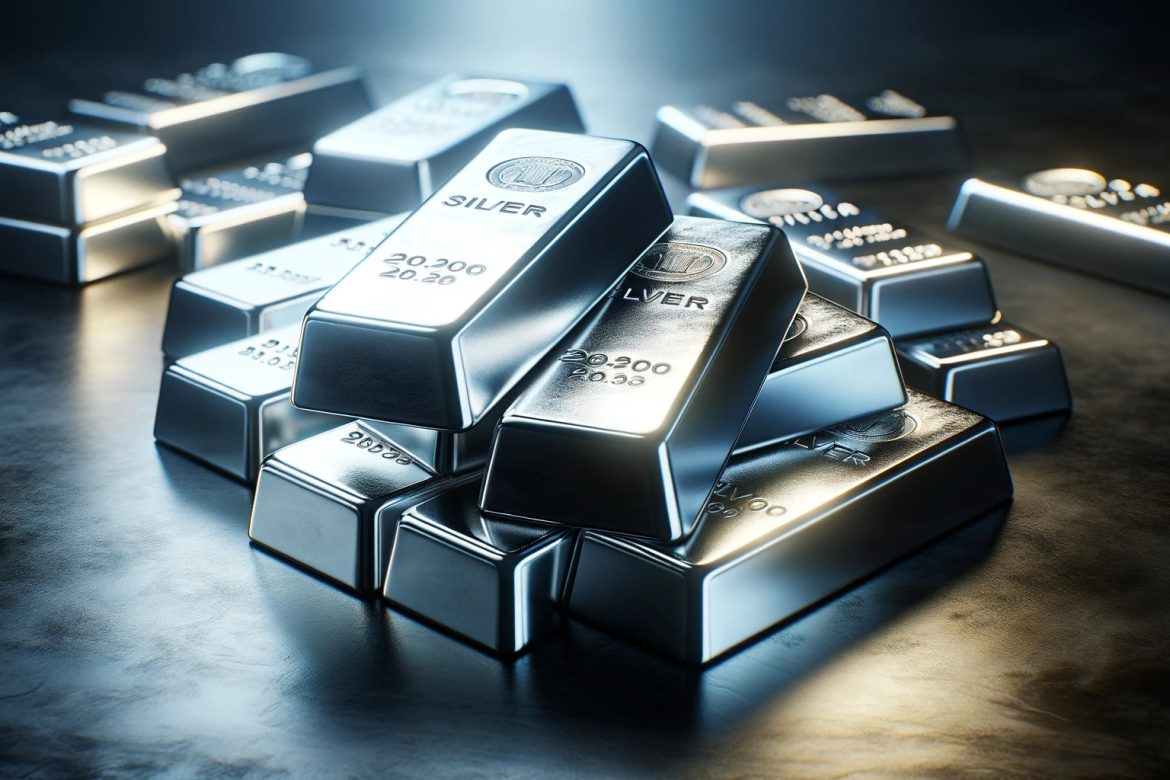Silver holds a place of honor in the shimmering world of precious metals for its timeless elegance and value. Whether you’re a collector, an investor, or someone who’s inherited a piece of history, knowing how to distinguish genuine silver from clever imitations is essential.
This knowledge protects your investment and preserves the legacy of the pieces you hold dear. Navigating the nuances of silver verification need not be daunting. With a few simple techniques, you can become adept at identifying the real deal. From the surprising reactions of silver under certain conditions to the telltale signs hidden in their very essence, we’ll guide you through various methods to confirm the authenticity of your silver.
Conduct the Magnet Test: A Quick and Easy Method
As we can read in the expert’s article “How to spot fake silver“, one of the most straightforward techniques to determine the authenticity of silver is the magnet test. Silver is a non-magnetic metal, which means that if your item is genuine, it should not exhibit any magnetic attraction. You will need a strong magnet, such as a neodymium magnet, to conduct this test. Gently bring the magnet close to the silver piece and observe the reaction. Keep in mind that while this method is effective, it is not foolproof, as some metals that mimic silver’s appearance can also be non-magnetic.
Examine Hallmarks: Unveiling Silver’s Authenticity
Discerning the authenticity of silver can often be achieved through meticulously inspecting its hallmarks. These small yet significant imprints are typically found on a discrete area of the silver item and can reveal much about its origins and purity. Consider the following points when examining hallmarks:
- Stamp of Purity: Look for stamps that indicate the metal content, such as 925, 800, or Sterling, which suggest a high silver content.
- Maker’s Mark: A manufacturer’s symbol or initials can reveal the piece’s provenance and legitimacy.
- Assay Office Mark: This mark signifies the testing of the silver by an official body, ensuring the metal meets legal standards.
- Date Letter: Some pieces will have a letter indicating the year of manufacture, which can be cross-referenced with historical records.
It’s important to note that the absence or presence of hallmarks is not a definitive test of silver’s authenticity but a strong indicator. Consult a professional appraiser who can provide a more detailed analysis when in doubt.
The Ice Cube Challenge: A Cool Trick for Silver Verification
Assessing the authenticity of silver can be both intriguing and straightforward with the Ice Cube Challenge. This method leverages silver’s high thermal conductivity, which is significantly more significant than most metals. To perform this test, place an ice cube on the silver item and another on a regular surface at room temperature. If the ice on the silver begins to melt more quickly, this is a strong indication that you’re dealing with genuine silver, as it efficiently transfers heat from your hand or the room to the ice cube.
While the Ice Cube Challenge is a clever and non-destructive test, it’s important to remember that it is not infallible. Certain metals and alloys can somewhat mimic silver’s thermal conductivity. Therefore, using this test in conjunction with other verification methods, such as checking for hallmarks, performing the magnet test, or consulting with a professional, is advisable. Combining multiple tests increases the likelihood of accurately identifying whether your silver is the real deal.
Inspecting Silver’s Physical Attributes: Color and Shine
When determining the authenticity of silver, a keen eye can often discern what is real from what is fake by examining its color and luster. Genuine silver possesses a unique, radiant white color with a subtle sheen that is not overly reflective, often referred to as a soft, white luster. This differs from fake silver, which may appear excessively shiny or have a stark, chrome-like finish. However, it’s important to note that some authentic silver pieces can develop a patina over time, altering their initial appearance and misleading an untrained observer.
Another aspect to consider is the uniformity of the silver’s surface. Authentic silver items typically showcase a consistent color and shine throughout, without areas of discoloration or tarnishing that can indicate inferior metal composites or plating techniques. The pros of using physical attributes as a test are that it is quick and non-destructive. However, the cons include the potential for error, especially in cases where the piece has been intentionally aged or when dealing with high-quality counterfeits that closely mimic the properties of real silver.
For non-professional appraisers, comparing the item to a known piece of real silver can be helpful. This side-by-side comparison can make discrepancies in color and shine more apparent.
The Sound Test: Listening for Silver’s Signature Ring
A sound test can be surprisingly practical for identifying genuine silver. When struck, real silver emits a high-pitched, resonant ring that lasts a few seconds. The sound is due to the metal’s density and elasticity, which causes vibrations at a specific frequency. To perform this test, gently tap the silver piece with another metal object and listen carefully. The clear, lingering tone indicates genuine silver, whereas a duller sound with a shorter duration may suggest a counterfeit or lower-quality metal.
It’s important to note that while the sound test is a valuable tool, it is not foolproof. Certain factors, such as the shape of the item and the presence of other metals, can influence the sound produced. Therefore, the sound test should be used in conjunction with other methods to increase the accuracy of your assessment.
Although the sound test requires a discerning ear, it can be a valuable part of a multi-faceted approach to verifying silver. Remember, no single test can guarantee authenticity, but by combining the sound test with other methods, you can be more confident in determining whether your silver is real.
Acid Testing: A Chemical Approach to Authenticating Silver
For those seeking a definitive method to ascertain silver’s authenticity, acid testing is a reliable chemical approach. This technique involves applying a small drop of nitric acid to the metal in question. Authentic silver will respond by displaying a creamy, whitish color, whereas fake items typically turn green due to high copper content. It’s imperative to note that acid testing should be conducted with the utmost care, as it involves corrosive substances that can cause damage to the item or harm the tester if not appropriately handled. For safety and accuracy, it is often recommended to have this test performed by a professional. Despite its effectiveness, acid testing is an invasive method and may leave a permanent mark. Thus, it should be used as a last resort when other non-destructive tests are inconclusive.
Weighing In: Assessing Silver’s Density and Mass
Expert analysis often turns to physical properties to distinguish genuine silver from counterfeit. Silver’s density, a key identifier, is notably high at approximately 10.49 g/cm³. This characteristic can be assessed by calculating the metal’s mass and volume and then comparing the resulting density to pure silver. A piece with a significantly lower density could indicate a silver-plated item or an alloy containing other, less dense metals. It’s essential to use precise scales and volume measurements to ensure accuracy, as even slight deviations can lead to incorrect conclusions about the silver’s authenticity.
Professional Appraisal: Seeking Expert Verification
Securing the services of a certified professional is a surefire method to determine the authenticity of silver items. These experts possess the tools and knowledge to perform detailed analyses, which go beyond the basic tests that can be done at home. They will scrutinize hallmarks, perform precise weight and density tests, and may even use advanced techniques such as X-ray fluorescence (XRF) analysis. A professional appraisal provides peace of mind and ensures that any valuation of the silver is accurate, which is particularly important for insurance or resale purposes.
Professionals often use comparison tables to illustrate the differences between real and fake silver. For example, a table might compare the specific gravity of a known genuine silver coin, which should be approximately 10.49 g/cm³, to that of a suspected counterfeit. Another comparison could involve the sound test, where real silver produces a distinct, long-lasting ringing sound when struck instead of a shorter, duller sound from a fake. These objective measurements are critical in a professional appraisal and can provide conclusive evidence regarding the silver’s authenticity.


